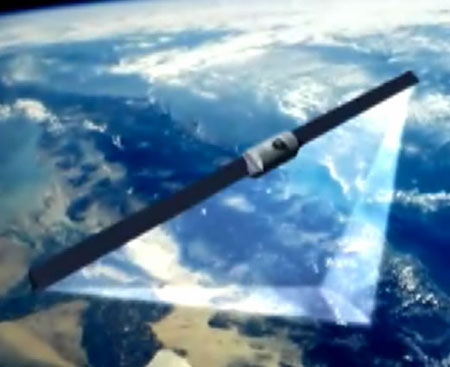 Air Force Research Lab’s Space Vehicles Directorate at Kirtland AFB, N.M., is working toward launching a “football field in length,” five-ton space-based radar antenna demonstrator in 2010. The aim of the program is to put antennas in space that can provide intelligence-surveillance-reconnaissance data for ground target detection. The effort’s official name is Innovative Space-based radar Antenna Technology, or ISAT. It’s one of the key technologies behind the Space-Based Radar. Two contractor teams—Boeing and Raytheon and Lockheed Martin and Harris—are vying to build the 100-yard long experimental antenna. Ultimately, the structures could extend to 300 yards. They will be deployed in a folded position.
Air Force Research Lab’s Space Vehicles Directorate at Kirtland AFB, N.M., is working toward launching a “football field in length,” five-ton space-based radar antenna demonstrator in 2010. The aim of the program is to put antennas in space that can provide intelligence-surveillance-reconnaissance data for ground target detection. The effort’s official name is Innovative Space-based radar Antenna Technology, or ISAT. It’s one of the key technologies behind the Space-Based Radar. Two contractor teams—Boeing and Raytheon and Lockheed Martin and Harris—are vying to build the 100-yard long experimental antenna. Ultimately, the structures could extend to 300 yards. They will be deployed in a folded position.
The Space Force's first planned satellite launch to begin a new missile warning constellation in medium-Earth orbit has slipped from late 2026 to spring 2027 as a key component remains unproven. But the service is making progress and moving forward with plans for new batches of satellites, the Guardian in charge…
